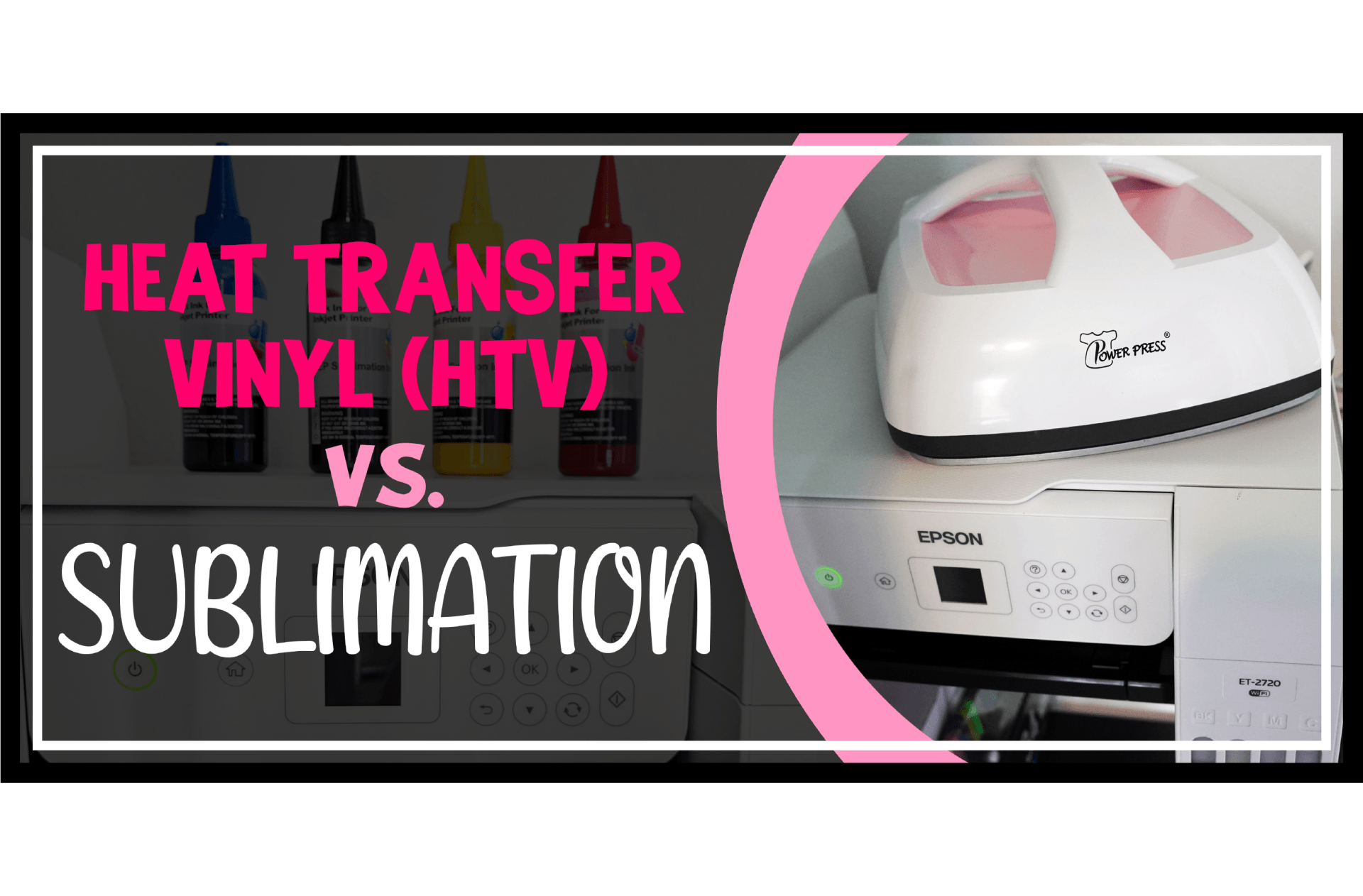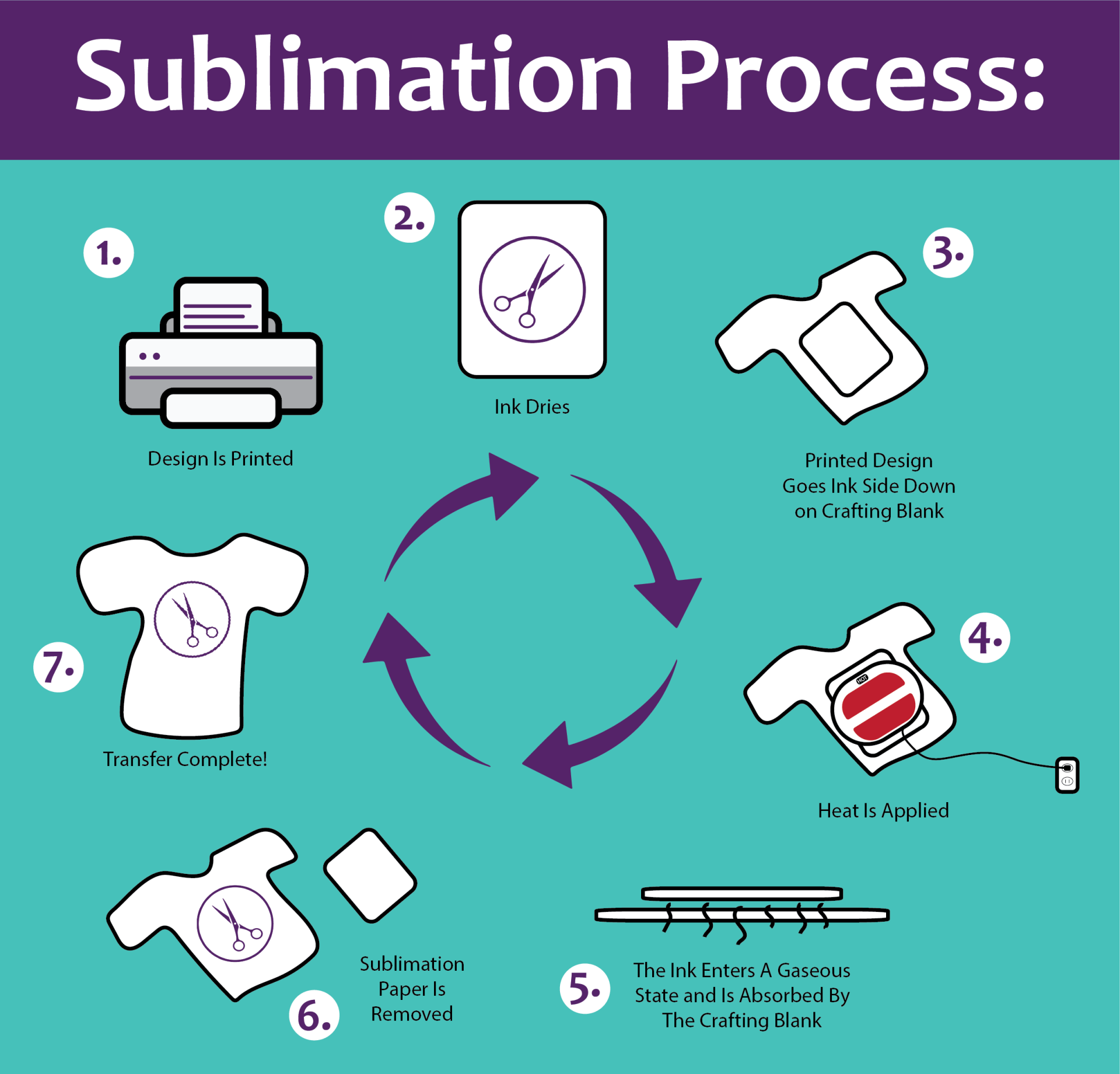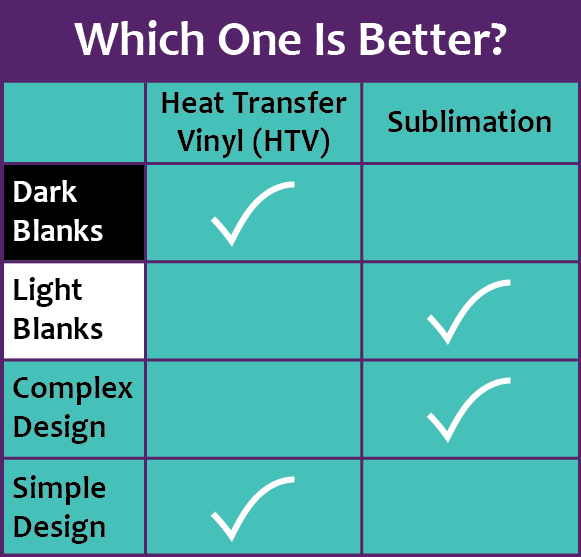So you’re confused about what on earth the difference between sublimation and HTV are? You’re not alone! I was in the exact same boat for a while as well which is why I’m so excited to clear the air, answer all those burning questions, and help you get a thorough understanding of what sublimation is, and how it differs from iron-on vinyl and HTV. So let’s get started!
Learn
how to convert a regular printer into a sublimation printer or, if you're looking for a generic printer to assist you in your Cricut print and cut projects but you don't know which printer to get, check out our guide on the
best inkjet printers for Cricut crafters and the
best sublimation printers see which one is best suited for your crafting needs AND your wallet! You can also head to our deals pages to discover the
best Amazon deals on crafting machines and see if a printer, heat press, Cricut machine, or other crafting machines you've been considering getting is on sale (spoiler alert: it probably is!)
Get in on more Cricut project ideas, hacks, tutorials, and more by following our social channels!
What is the Difference Between Sublimation and Heat Transfer Vinyl (HTV)?
Sublimation is a dyeing process. So, similar to tie-dyeing shirts, a sublimation end-product is dyed, unlike when we use iron-on or heat transfer vinyl (HTV). When we use HTV or iron-on vinyl we adhere or melt a plastic-based material onto our project blank. Iron-on vinyl and HTV eventually fade with time and at some point will start to crack and peel- it’s the nature of any thin plastic-like material such as vinyl/HTV.
Sublimation will not fade as fast, crack, or peel over time because again, it has actually dyed your blank and there’s nothing melted on to or adhered to the surface. Just like unwanted grass stains on jeans- sublimation dye is there to stay!
What IS Sublimation?
Sublimation is the process of transferring sheets of dried ink onto a crafting blank. The scientific definition of sublimation is the process of when when a solid turns into a gas, without ever becoming a liquid. In crafting, our “solid” is sheets of dried sublimation ink or Cricut infusible ink sheets, and the dye goes from a solid state to a gaseous state and it then the dye gets absorbed by our sublimation blank and thus the dye is transferred from the sublimation paper to our blank. Learn everything you need to know about sublimation and discover how you can convert a printer into a sublimation printer so you can print your own custom sublimation transfers from home!
Here is the sublimation process breakdown:
- Sublimation ink is printed on to sublimation paper
- The sublimation ink dries on the paper
- The sheet of sublimation ink is placed on a sublimation blank (whose surface is absorbent- learn more about why you need to use special sublimation blanks)
- Heat is applied
- The sublimation ink changes from a solid state to a gaseous state
- The ink is transferred from the sublimation paper to the sublimation blank
- The sublimation process is complete! The ink has now gone from paper, to crafting blank. It started out as a solid, heat was applied, it turned into a gas and was transferred to our blank which now looks AMAZING!
Do you need a Cricut to do sublimation?
Not at all! Cricut machines are for cutting, not printing. They have absolutely no printing capabilities and you do not need one to do sublimation projects. If you’re interested in being able to print your sublimation designs and pattern sheets at home, learn how you can convert a regular printer into a sublimation printer so you can create ANY sublimation design you want at home! You can also check out the three ways you can get sublimation transfer sheets, if you’re not sure you want to dive into converting your own printer, you can discover which option is best for you, your budget, and your current printing capabilities!
Why buy a Cricut if you don’t need it for sublimation projects?
Cricut sells their own brand of sublimation ink sheets, called Infusible Ink. These sheets are usually vibrant, fun patterns and people use their Cricut machine to cut words, shapes, or designs out of the Infusible Ink sheets. If you don’t have a Cricut and you’re considering purchasing one but you’re not sure which one to get, discover which one you should get by checking out our guide to discovering which Cricut machine is best for you. Here are some examples below on how people used Cricut Infusible Ink in combination with a Cricut machine to create gorgeous sublimation projects:
Infusible Ink Projects:
How Are Sublimation Projects Different From HTV and Iron-On Vinyl Projects?
HTV and Iron-on vinyl projects typically feature one color or one pattern of vinyl for the design OR they require layering. If you’re looking to make a project in one color or pattern, it’s super easy to do with HTV or iron-on vinyl, however if you’re not a fan of layering or you’re looking to transfer a super detailed design with lots of different colors, you’re going to need to use another method like sublimation. Check out the comparisons below on the different types of projects you can do with HTV/Iron-on vinyl vs sublimation prints:
Sublimation Print Projects:
Did you know you can order custom sublimation prints on Etsy if you don't have a sublimation printer?
HTV/Iron-On Vinyl Projects:
What’s Better: Sublimation or HTV/Iron-on Vinyl?
That depends on what you’re trying to create. If you’re using white, or light-colored blanks, and you’re looking to customize it with a super fun, bright, detailed design that either requires many colors, blended colors, or is a design that’s too complicated for your Cricut to cut out, sublimation is probably your best bet. However if you’re looking to customize dark blanks or super saturated/vibrant blanks, odds are you either won’t see the sublimation dye if you use the sublimation method and you're probably going to want to ust HTV/Iron on vinyl OR printable transfer paper for dark fabrics.
(think about how tie-dyeing a black or super vibrant t-shirt would turn out… it probably won’t turn out that well. You either wouldn't see the dye colors, or the original color of the t-shirt will muddle and dull how the dye colors turn out like if you tried tie-dyeing a vibrant orange shirt yellow or blue… they probably won’t be visible OR they’ll turn out looking brown)
In general, sublimation is the best to use on light colored blanks for transferring detailed designs, or designs with blended colors (color effects you can’t get with HTV) and HTV/Iron-on vinyl is best for dark or super saturated colored blanks, for transferring simpler designs featuring between around 1-5 colors/patterns you can purchase the vinyl in:
So there you have it! Hopefully this answered your questions about the difference between heat transfer vinyl and sublimation and ideally we answered some questions you didn't even know you had!
if you're interested in getting your own sublimation printer, check out our tutorial on how to convert a regular printer into a sublimation printer and unlock FULL creative freedom when it comes to sublimation projects and as always,
Happy Crafting!
Get in on more Cricut project ideas, hacks, tutorials, and more by following our social channels!
Check out the Crafting Spree blog for more DIY, Crafting & Cricut Resources:






